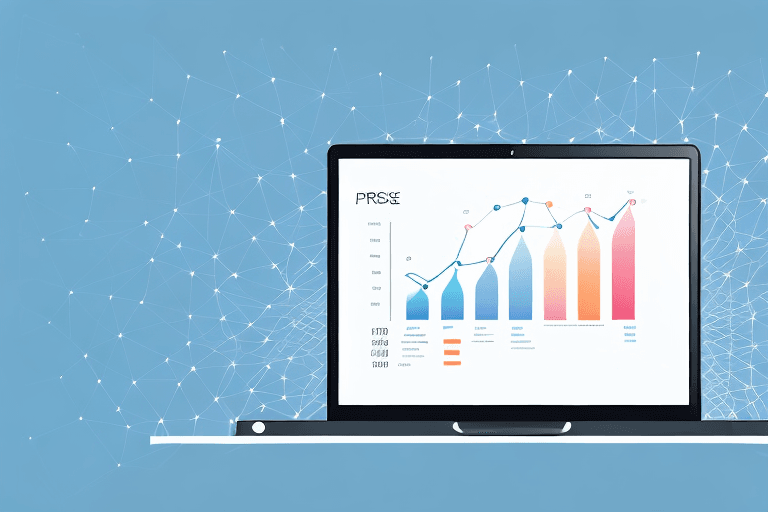In today's digital age, fundraising campaigns have evolved to include a variety of channels. However, email remains an essential tool in any fundraiser's arsenal. With over 293 billion emails sent every day, it's a cost-effective way to reach a large audience. But how do you ensure your email campaign stands out among the thousands of other emails in people's inboxes?
Understanding the Importance of Fundraising Emails
Email is an important component of any fundraising campaign because it allows you to connect with donors in a personal and direct way. Unlike social media and other forms of advertising, email gives you a chance to build a relationship with your donors. According to recent studies, email has an average ROI of $42 for every dollar spent, making it one of the most cost-effective ways to raise funds.
The role of email in fundraising campaigns
Emails play a vital role in fundraising campaigns as they allow you to connect with donors on a personal level and keep them engaged with your cause. You can use emails to share information about your organization's latest achievements, upcoming events, and new fundraising initiatives. It's also a great way to thank your donors and update them on the impact their donations have had.
For example, you can send an email to your donors after a successful fundraising event, thanking them for their contributions and sharing how much money was raised. You can also use email to keep donors informed about the progress of a specific project or campaign that they have donated to. This helps to build trust and credibility with your donors, as they can see the tangible impact of their contributions.
Key elements of successful fundraising emails
Successful fundraising emails have a few key elements in common. They are well-written, have a clear call-to-action, and convey a sense of urgency. They should also be personalized, easy to read, and mobile-friendly.
Personalization is key to making your donors feel valued and appreciated. Use their first name in the email and reference any previous donations or involvement they have had with your organization. This shows that you are paying attention to their contributions and that they are making a difference.
Another important element is a clear call-to-action. Your email should have a specific goal, whether it's to donate to a specific campaign or attend an upcoming event. Make sure that the call-to-action is prominent and easy to find within the email.
Conveying a sense of urgency can also help to increase donations. Let your donors know that their contribution is needed now and that every donation counts. You can also create a sense of urgency by setting a deadline for donations or highlighting a specific fundraising goal that needs to be reached.
Finally, make sure that your email is easy to read and mobile-friendly. Many people check their emails on their phones, so it's important that your email is optimized for mobile devices. Use short paragraphs, bullet points, and images to break up the text and make it more visually appealing.
By following these key elements, you can create successful fundraising emails that help to increase donations, build relationships with donors, and generate new leads.
Setting Your Fundraising Goals and Objectives
Defining your target audience
Before you start sending out emails, it's essential to define your target audience. Who are the people you want to reach with your message? Are they past donors, potential donors, or a specific segment of the population? Knowing your audience helps you tailor your message and increase the chances of a positive response.
One way to define your target audience is to create donor personas. Donor personas are fictional representations of your ideal donors. They help you understand your audience's motivations, interests, and behaviors. By creating donor personas, you can tailor your message to resonate with your audience and increase the chances of a positive response.
For example, if you're fundraising for a nonprofit that provides education to underprivileged children, your target audience might be parents or individuals who value education. By understanding your audience's motivations and interests, you can craft a message that speaks to their values and inspires them to donate.
Establishing your fundraising target
The next step is to set a fundraising goal. Be specific about how much money you want to raise, and ensure it's achievable. Setting a target helps you focus your efforts and gives donors a sense of purpose. It also allows you to measure the success of your campaign and make adjustments along the way.
When setting your fundraising target, consider the costs associated with your campaign. For example, if you're hosting a fundraising event, you'll need to factor in the cost of venue rental, catering, and marketing materials. By understanding the costs associated with your campaign, you can set a realistic fundraising target that covers your expenses and helps you achieve your goals.
Creating a timeline for your campaign
Once you've identified your target audience and set your goal, it's time to create a timeline for your campaign. Your timeline should include key milestones, such as when you'll send out emails, when you'll follow up with donors, and when you'll measure your progress. A well-planned timeline helps you stay on track and ensure everything runs smoothly.
When creating your timeline, consider the timing of your campaign. For example, if you're fundraising for a holiday event, you'll want to start your campaign well in advance to give donors enough time to plan and donate. You'll also want to consider the timing of other fundraising events in your area to avoid competing for the same donors.
In addition to key milestones, your timeline should also include contingency plans. For example, if you don't meet your fundraising target by a certain date, you may need to adjust your message or reach out to new donors.
By creating a well-planned timeline, you can ensure your campaign runs smoothly and achieve your fundraising goals.
Crafting a Compelling Subject Line
The power of personalization
The subject line is the first thing a recipient sees in their inbox, so it's essential to make it stand out. Personalization is one way to achieve this. Use the recipient's name in the subject line as it helps to create a connection and increase the chances of the email being opened. Personalization also extends to the email content, where you can tailor the message to fit the recipient's interests and preferences.
Personalization is a powerful tool that can help you build stronger relationships with your donors. By taking the time to understand their interests and preferences, you can create more targeted and relevant content that resonates with them. For example, if you know that a particular donor is passionate about animal welfare, you can tailor your message to highlight how your organization is making a difference in this area.
Another way to personalize your subject lines is to segment your donor list based on their past behavior or engagement with your organization. For example, you could create a separate email campaign for donors who have given to your organization in the past year and personalize the subject line with a message like "Thank you for your continued support."
Using urgency and scarcity
People are more likely to act when they feel a sense of urgency or scarcity. In your subject line, use phrases like "don't miss out" or "limited time offer" to encourage people to open the email and take action. However, it's essential to be honest about the urgency or scarcity, or else you risk losing trust with your donors.
Creating a sense of urgency in your subject line can be an effective way to drive donations or encourage people to take action on a particular issue. For example, if your organization is running a fundraising campaign to support a specific project, you could use a subject line like "Only 24 hours left to make a difference!" to encourage people to donate before the deadline.
It's important to note that using urgency and scarcity should be done sparingly and only when it's appropriate. Overusing these tactics can lead to donor fatigue and cause people to tune out your messages.
Testing and optimizing subject lines
Finally, it's crucial to test and optimize your subject lines. Use A/B testing to compare different subject lines and see which ones perform best. You can also use data analytics to track the open and click-through rates of your emails. Use this information to optimize your subject lines and improve the performance of your email campaigns.
There are many factors that can impact the performance of your subject lines, including the length, tone, and wording. By testing different variations, you can identify which elements resonate best with your audience and use this knowledge to create more effective subject lines in the future.
It's also important to keep in mind that what works for one audience may not work for another. That's why it's essential to continually test and optimize your subject lines to ensure that they are resonating with your specific audience.
Writing Engaging Email Content
Telling a powerful story
The content of your email should tell a compelling story that connects with your readers emotionally. Highlight the impact of your organization's work and how donations can make a difference in people's lives. Use vivid language and create a narrative that draws the reader in and creates a sense of urgency.
Highlighting the impact of donations
People want to know that their donations are making a real difference. Use your email content to showcase the impact of past donations, such as sharing stories of how their contributions helped specific individuals or how they supported a particular project. Highlighting the impact of donations can encourage people to give more and feel good about their contribution.
Using persuasive language and calls to action
A strong call-to-action (CTA) encourages readers to take action, such as making a donation or signing up for a newsletter. Your CTA should be clear, concise, and prominent in your email content. Use persuasive language to encourage people to take action, and make the process as easy as possible by including links and buttons that take them to the donation page or sign-up form.
Conclusion
Creating a winning fundraising email template involves understanding the importance of emails in fundraising campaigns, setting achievable goals, crafting a compelling subject line, and writing engaging email content. By following these tips, you can increase your chances of creating successful email campaigns that resonate with your readers and encourage them to take action.




